Technology Starts a Revolution: Here Comes the ZMI 10 Power Bank!
The number 10 has been a key number in football: Maradona, Messi, and Zidane, all were 10s, all possessed huge attack and scoring capability, and all were the driving forces of their teams. The ZMI 10 Power Bank uses the latest USB-C port based on the standard USB PD2.0 protocol, along with ZMI's own bidirectional protocol. With its "dual engine" design, it offers an outstanding bidirectional charging/discharging capability of up to 45 W, as you would expect from a Mi 10 series product.
I. First-Class Dual Power-Source Solution
The ZMI 10 Power Bank uses a power-source solution combining American companies TI's high-current Buck and Intersil's latest BUCK-BOOST voltage regulation algorithm, allowing its "dual engines" to deliver greater power. See figure below.
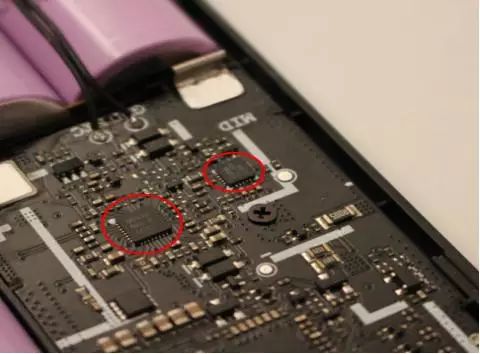
Intersil (USA):
Intersil is a global market leader in power management and precision analog technology meeting the strict application requirements of the computing, consumer products, industrial products, and other sectors requiring high reliability.
Apple's new Macbook's recharging chips use Intersil power chips of the same architecture as the ZMI 10 Power Bank.
TI (USA):
TI, an American company with over 80 years' history, is a current global leader in power banks and simulators, and core supplier to many giant companies including Apple. Xiaomi has used TI power chips (see below) in its power banks, ever since the first generation of its products.
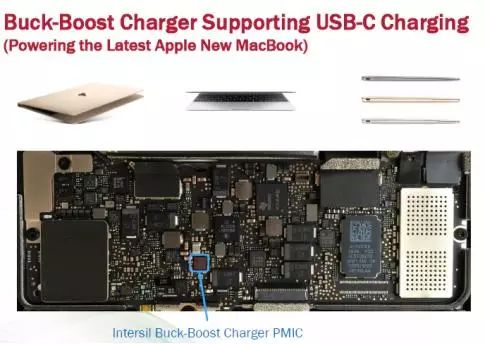
II. Unique Dual Power-Source Architecture
Traditional power banks use Buck-charge and Boost-discharge unidirectional architectures and contain MOSFETs, in a simple, cost-effective architecture. However, such power banks can deliver 24 W of power at most, since their circuit losses increase with power supplied, overheating their inductors or chips, and reducing their efficiency.
The ZMI 10 Power Bank adopts the same Buck-Boost bidirectional architecture used in Apple's new Macbook, with four low-impedance MOSFETs arranged externally to permit 5-20 V broad voltage bidirectional input/output at up to 45 W power. While the Buck-Boost bidirectional architecture is complex and costly, it is highly efficient, delivers greater power, and can be used to charge 1-4 batteries simultaneously.
During charging or discharging via its USB-C port, the ZMI 10 Power Bank's USB-A port still provides 5 V output: besides the Buck-Boost power chip, the power bank incorporates a further TI large-current Buck power chip, enabling separate 5 V power output to the USB-A port. This is how the power bank's three ports can power three devices simultaneously.
The Buck-Boost architecture:
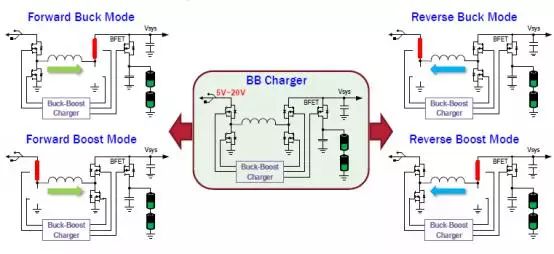
III. Dual 90% + High-Efficiency Design
The ZMI 10 Power Bank can be fully charged in as little as 3.8 hours using a 45 W PD charger, less half the 9 hours needed to fully charge a 20,000-mAh power bank using a 5V/2A power input. This time saving depends on its dual 90%+ high-efficiency design.
1. High-efficiency circuit design
The power bank's full-load power efficiency can reach as high as 92%, thanks to its Intersil Buck-Boost chips and four 7-milliohm-impedance MOSFETs. Its TI Buck power chips can yield up to 93% efficiency used in conjunction with 7-milliohm-impedance MOSFETs.
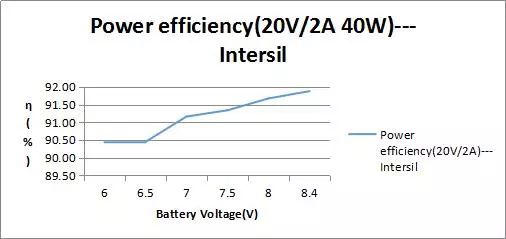
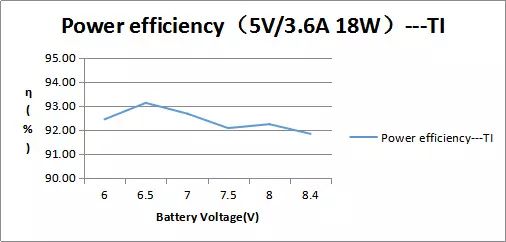
2. High-efficiency battery pack architecture
With a traditional architecture composed of single batteries in parallel, in order to achieve 20 V/45 W output, the circuit's maximum current must exceed 15 A. But such high currents make ordinary power chips and batteries overheat, lowering their efficiency. In the worst case, battery safety issues may even occur.
So, the ZMI 10 Power Bank adopts a two-series/three-parallel architecture using six LG 3,350 mAh lithium batteries, lowering the maximum working current to 7-8 A, half that occurring in a traditional single-battery pack architecture. This greatly reduces board-level circuit and component losses and component over-heating, and markedly improves conversion efficiency.
IV. Advantages over Traditional AC Adapters
1. Wide compatibility
The ZMI 10 Power Bank incorporates Fairchild (USA) PD chips, for compatibility with various types of PD protocol-capable laptops over USB-C ports, through ZMI's proprietary bidirectional PD protocol. Meanwhile, the ZMI 10 Power Bank has wider compatibility than standard laptop chargers. Specifically, by incorporating various phone charging protocols, the ZMI 10 Power Bank offers compatibility with QC3.0/QC2.0/Apple/BC1.2 protocol-compliant phones and tablets.
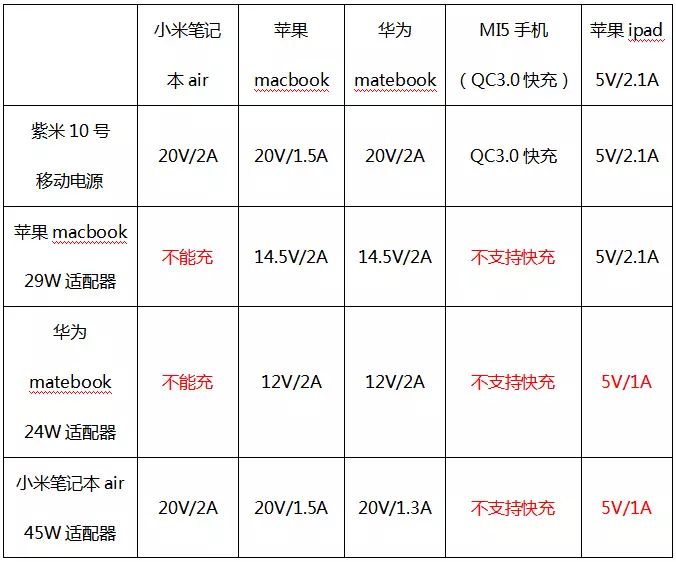
Note: The voltage and current in the preceding table are those delivered by devices to the charger and are provided for reference only. The actual value will vary depending on the running status of the computer.
2. No grid AC ripple or low-frequency common-mode voltage interference
The power frequency in China is 50 Hz. After AC-DC full-wave rectification, a 100-Hz power frequency ripple is superposed on the adapter's output. When a load is being charged, this frequency ripple is also introduced, resulting in interference and thermal loss in the device. The following figure shows the waveform of a power frequency ripple.
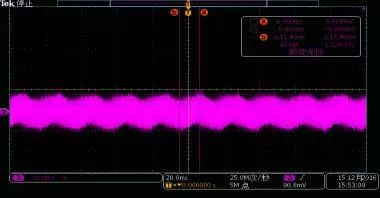
Since almost all phones are equipped with touchscreens, users may notice touchscreen malfunctions or jumping during charging. This is particularly likely to happen during usage of non-standard adapters. This is because the adapter output tends to contain a low-frequency common-mode voltage. The amount varies between adapters and can lead to screen malfunction or jumping in the worst cases. The following figure shows the waveform of common-mode interference.
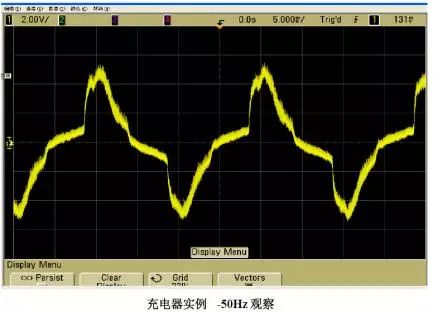
The ZMI 10 Power Bank supplies power directly from its batteries, and therefore does not generate power frequency ripple or low-frequency common-mode voltage, and thus provides a pure working voltage input to target devices such as laptops and phones.
In short, after one year's research on USB PD protocols based on the latest USB Type-C ports, ZMI engineers' "dual engine" design for the ZMI 10 Power Bank incorporates high-efficiency power solutions from the top providers, and a multiple series-parallel battery pack architecture. This sets a new trend in the power bank sector, opening the way to PD-based USB mobile laptop charging. This forward-looking power bank not only showcases ZMI's strong spirit of exploration, but also sends a strong signal to the entire power bank market: a revolution is around the corner. This makes it an important breakthrough for future secondary market growth, through integration of increased product functionality, increasing power banks' portability-value.